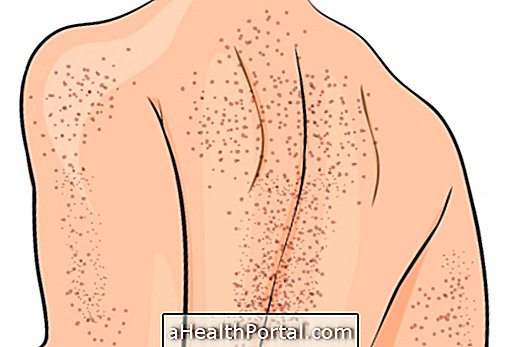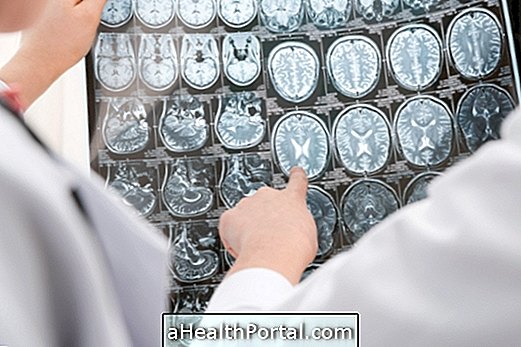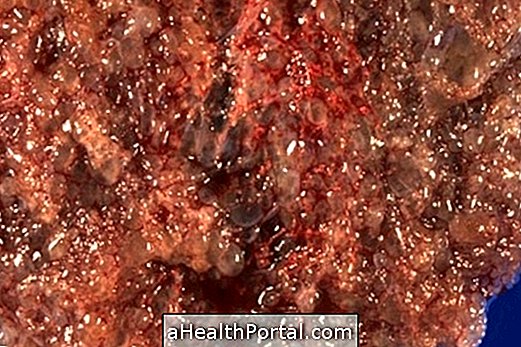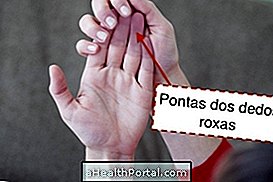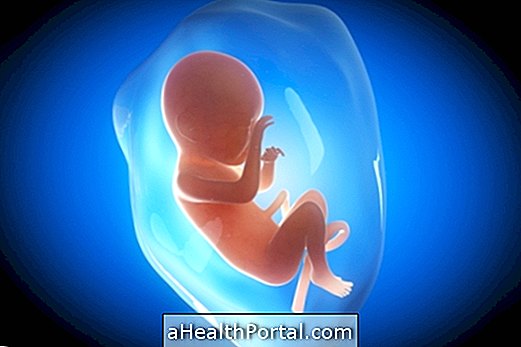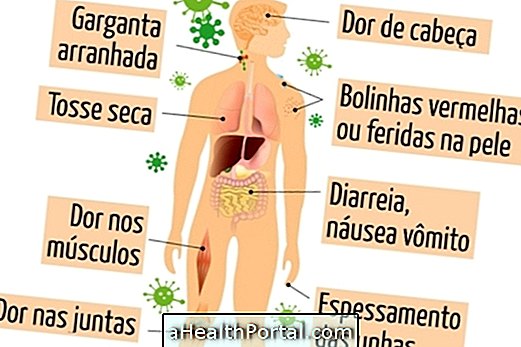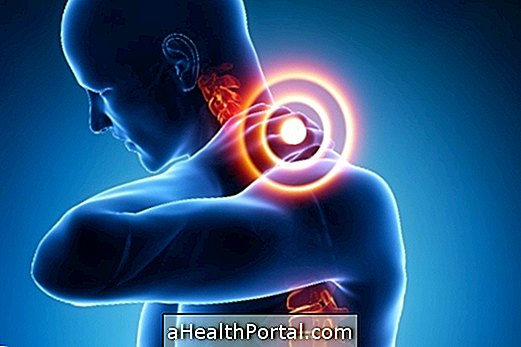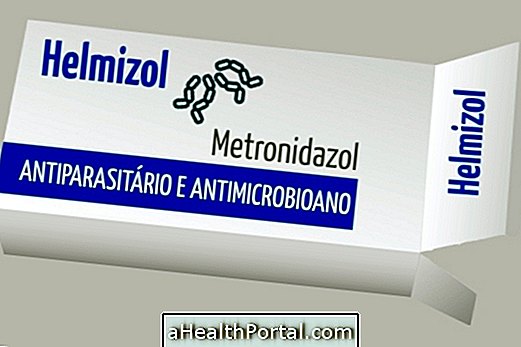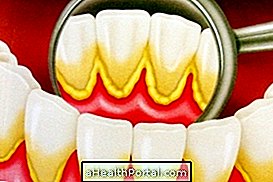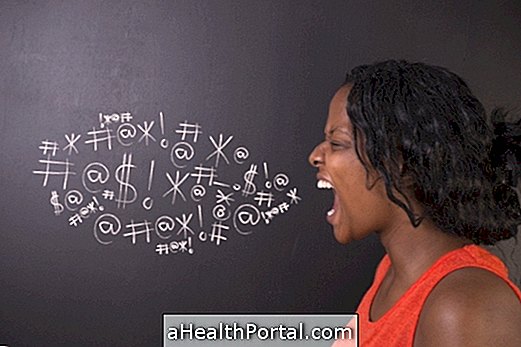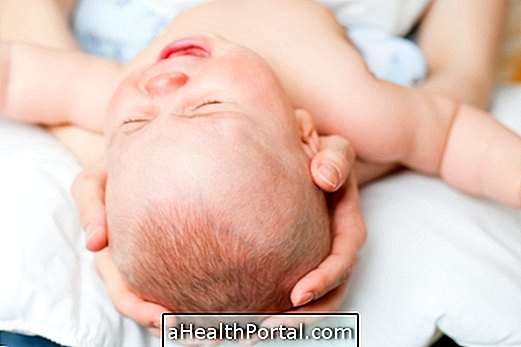Congenital myasthenia is a disease that involves the neuromuscular junction and therefore causes progressive muscle weakness, often leading the person to having to walk in a wheelchair. This disease can be discovered in adolescence or adulthood and depending on the type of genetic alteration that the person has, can be cured with the use of medications.
In addition to the remedies indicated by the neurologist also it is necessary to do physiotherapy to recover the strength of the muscles and coordination of the movements, but the person can return to walk normally, without needing a wheelchair or crutches.
Congenital myasthenia is not exactly the same as myasthenia gravis because in the case of Myasthenia Gravis the cause is a change in the person's immune system, whereas in congenital myasthenia the cause is a genetic mutation that is common in people of the same family.

Symptoms of Congenital Myasthenia
Symptoms of Congenital Myasthenia usually appear in babies or between the ages of 3 and 7, but some types appear between the ages of 20 and 40, and may be:
In the baby:
- Difficulty in breastfeeding or bottle-feeding, easy choking and little force to suck;
- Hypotonia manifested through weakness of arms and legs;
- Eyelid drooping;
- Joint contractures (congenital arthrogryposis);
- Decreased facial expression;
- Difficulty breathing and fingertips and purplish lips;
- Developmental delay to sit, crawl and walk;
- In older children there may be difficulty climbing stairs.
In children, adolescents or adults:
- Weakness in legs or arms with tingling sensation;
- Difficulty walking with the need to sit down to rest;
- There may be weakness of the eye muscles that leave the eyelid drooping;
- Tiredness when making small efforts;
- There may be scoliosis in the spine.
There are 4 different types of congenital myasthenia: slow channel, fast channel of low affinity, severe deficiency of AChR or deficiency of AChE. Because congenital myasthenia of the slow channel can appear between the 20 and 30 years of age. Each type has its own characteristics and the treatment can also vary from one person to another because not all of them have the same symptoms.
How is the diagnosis made?
The diagnosis of Congenital Myasthenia should be made based on the symptoms presented and can be confirmed by examinations such as CK blood test and genetic tests, antibody screening to confirm that it is not Myasthenia Gravis, and an electromyography that evaluates the quality of contraction muscular, for example.
In older children, adolescents and adults, the doctor or physiotherapist may also perform some tests in the office to identify muscle weakness, such as:
- Look at the ceiling for 2 minutes, fixedly and observe if there is a worsening of the difficulty in keeping the eyelids open;
- Raise the arms forward to shoulder height, maintaining this position for 2 minutes and observe if it is possible to maintain this contraction or if there is a fall of the arms;
- Lift off the stretcher without the help of your arms more than once or lift your chair more than 2 times to see if there is more and more difficulty in performing these movements.
If muscle weakness is observed, and it is difficult to perform these tests, it is very likely that there is generalized muscle weakness, evidencing a disease such as myasthenia.
To assess whether speech has also been affected, one may ask the person to quote from 1 to 100 and note whether there is a change in the tone of the voice, a vocal failure, or an increase in the time between citations of each number.
Treatment for congenital myasthenia

Treatments vary according to the type of congenital myasthenia that the person has but in some cases medications such as acetylcholine esterase inhibitors, Quinidine, Fluoxetine, Ephedrine and Salbutamol may be indicated under the indication of the neuropediatrician or neurologist. Physical therapy is indicated and may help the person feel better, fighting muscle weakness and improving breathing but will not be effective without medications.
Children can sleep with an oxygen mask called CPAP and parents should learn how to provide first aid in case of respiratory arrest. Know what to do if your baby stops breathing.
In physical therapy exercises should be isometric and have few repetitions but should cover several muscle groups, including respiratory muscles and are very useful to increase the amount of mitochondria, muscles, capillaries and decrease the concentration of lactate, resulting in less cramp.
Does congenital myasthenia have a cure?
In most cases congenital myasthenia has no cure, requiring lifelong treatment. However, remedies and physiotherapy help to improve the person's quality of life, combat fatigue and muscle weakness and avoid complications such as atrophy of the arms and legs and the asphyxiation that can arise when breathing is impaired, which is why, life is essential.
Patients with Congenital Myasthenia caused by a defect in the DOK7 gene may have a large improvement in the condition and may appear to be 'cured' with the use of a commonly used remedy against asthma, salbutamol, but in the form of tablets or lozenges. However, physical therapy may still be required sporadically.
When the person has congenital myasthenia and does not perform the treatment, it progressively loses its force in the muscles, becoming atrophied, needing to remain bedridden and may die from respiratory failure and therefore the clinical and physiotherapeutic treatment is so important because both can improve the quality of life and prolong life.
Some medicines that worsen Congenital Myasthenia are Ciprofloxacin, Chloroquine, Procaine, Lithium, Phenytoin, Beta-blockers, Procainamide and Quinidine and therefore every medicine should only be used under medical indication after identifying the type that the person has.
